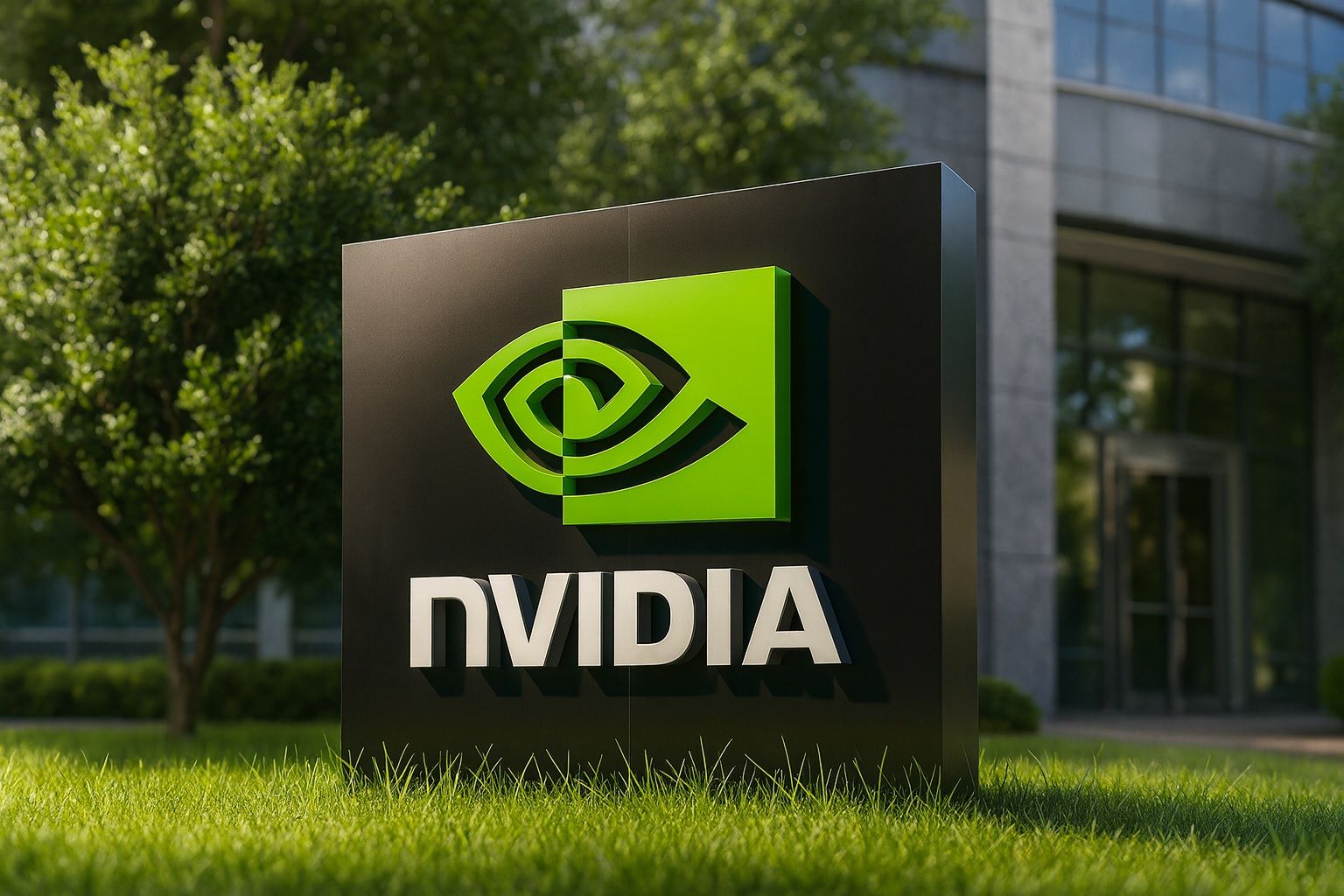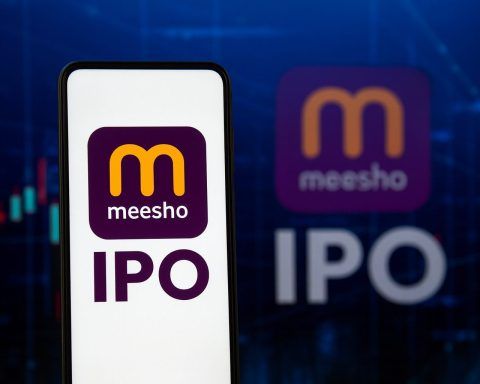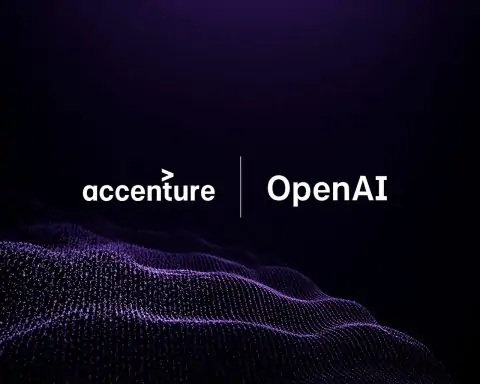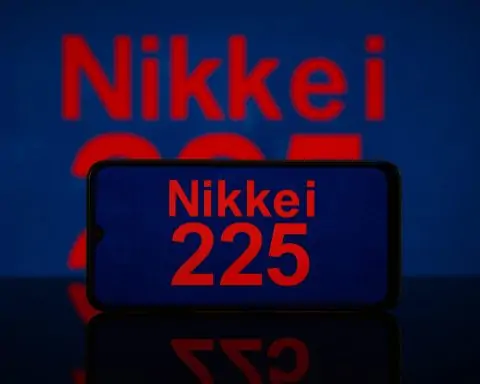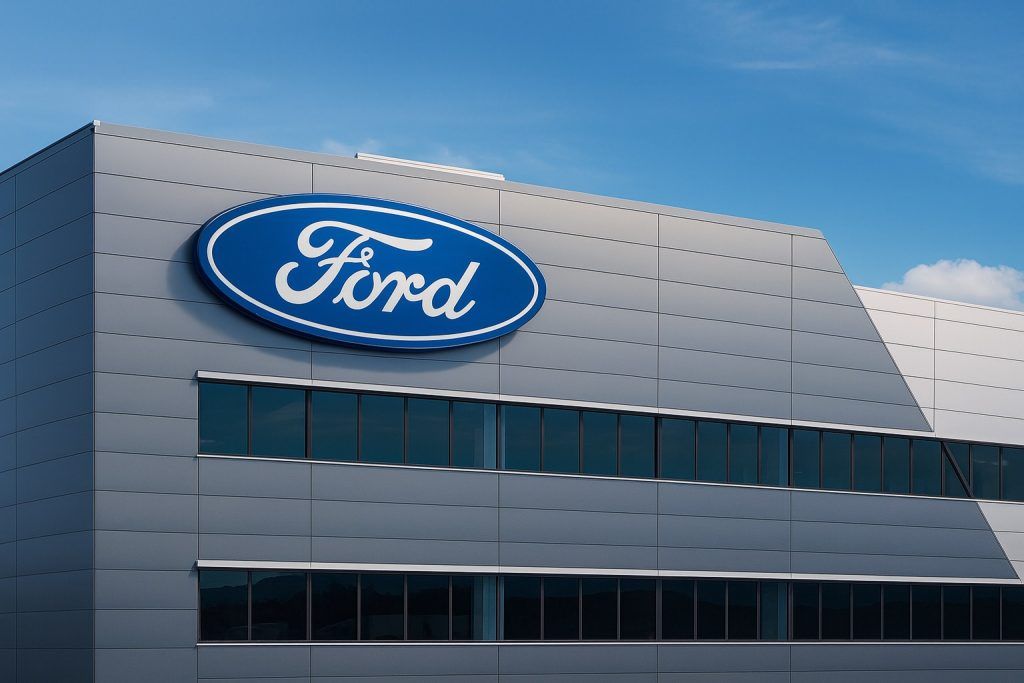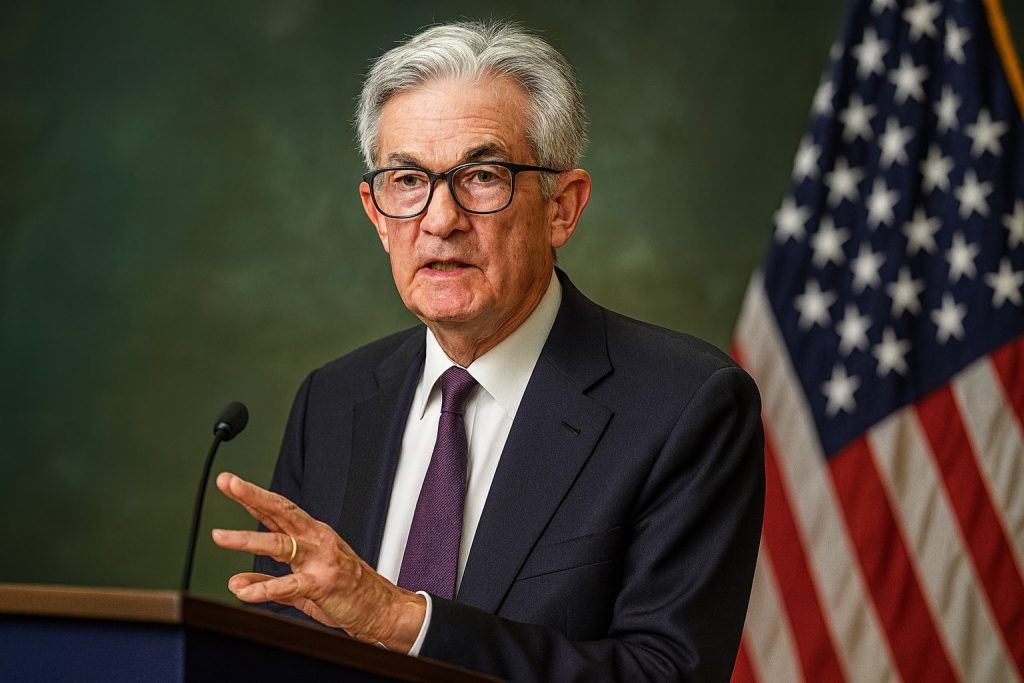- Stock Price: Nvidia’s NVDA closed around $190.7 on Oct. 27, 2025 (up ~2.8% that day) [1], lifting its 2025 gain to roughly +30% YTD. The rally has brought NVDA within a few points of its early-Oct record (~$195) [2].
- Valuation: The company briefly surpassed a $4+ trillion market cap in early October [3], after reporting 56% year-over-year revenue growth last quarter [4]. NVDA trades near 50× forward earnings, reflecting sky-high expectations.
- AI Mega-Deals: Nvidia has unveiled blockbuster AI partnerships: a $100 billion GPU pact with OpenAI (supplying ~10 gigawatts of chips) [5], a $5 billion equity partnership with Intel for next-gen CPU–GPU systems [6], and participation in a consortium (with Microsoft, BlackRock, etc.) to buy $40 billion of AI data center assets [7]. OpenAI CEO Sam Altman exulted that “Everything starts with compute,” underscoring Nvidia’s central role [8].
- Analyst Sentiment: Wall Street is broadly bullish on NVDA. About 80–90% of analysts rate it a “Buy” (roughly 38 out of 47) [9] [10], with average 12-month price targets around $210–$225 (≈15–20% above current levels) [11] [12]. Many have raised targets as results keep surprising: for example, HSBC’s Frank Lee now sets NVDA’s target at $320 (≈+70%) [13]. (By contrast, a lone bear, analyst Jay Goldberg, warns of a potential collapse – assigning a mere $100 target on the basis of “AI bubble” risks [14].)
- Macro Tailwinds & Risks: Recent market tailwinds – progress in US–China trade talks and cooler inflation – have buoyed tech stocks (Nvidia jumped 2.8% on Oct. 27, leading the S&P 500) [15] [16]. However, geopolitics cast a shadow: export curbs and U.S.–China tensions could shave off 10–15% of NVDA revenue from Chinese sales [17]. As one trader quipped, “Nvidia’s biggest bottleneck isn’t silicon, it’s diplomacy.” [18]
- Competition: Rivals are stepping up, but Nvidia still dominates AI chips. AMD recently struck a deal to supply OpenAI with ~6 GW of GPUs (jumping AMD’s stock +34%) [19]. Qualcomm just unveiled new data-center AI chips (shares soared ~11% on Oct. 27) [20]. Even chip giants like Broadcom and Apple’s ARM are chasing AI workloads. Still, analysts note “Nvidia still sells every AI chip it can make,” even as the market “is expanding for multiple players” [21].
- Outlook: Analysts expect NVDA to climb higher in the near term. Consensus forecasts put NVDA around the low–$200s by year-end (roughly $225) [22]. If the AI boom continues, bulls foresee even more (Barclays notes NVDA could rally ~35% if global AI spending hits ~$2 trillion [23]). In short, most see further gains ahead, but they caution that NVDA’s rich valuation leaves little margin for error [24] [25]. As one strategist observed, Nvidia’s AI dominance is now “baked in” to expectations – meaning investors should brace for “a volatile ride, not a slump” [26].
NVDA Stock Surges on AI Optimism and Trade Hopes
Nvidia’s share price has climbed sharply in late October. The stock closed around $191 on Oct. 27 [27] (versus ~$182 just a week earlier [28]), driven by broad rallies in high-tech. U.S. markets hit record highs on Oct. 27 as investors cheered signs of a U.S.–China trade détente and a likely Fed rate cut [29] [30]. NVDA outpaced the S&P 500 on Monday, rising 2.8% and providing the biggest boost to the index [31]. That lifted Nvidia’s market cap back near $4 trillion (it briefly topped $4 trillion in early Oct. [32]). The year-to-date gain is now roughly +30%, vastly outperforming the broader market [33]. In fact, Monday’s jump took NVDA to within a few dollars of its Oct 10 intraday peak (~$195.62) [34].
Several factors have fueled this rise. First, earnings and growth are booming: In its latest quarter (FY2026 Q2, ended July 2025), Nvidia reported a 56% jump in revenue to $46.7 billion [35], with a staggering 88% of sales in data-center GPUs [36]. Profit margins also expanded, and the company guided for roughly 54% sales growth next quarter [37]. Investors cheered these “blowout” numbers [38]. Second, market sentiment is very bullish on AI. With megacaps reporting, confidence is high that “all this AI capex is coming through,” as one strategist put it [39] [40]. Finally, ongoing US–China trade talks and benign inflation data have created a friendly environment for growth stocks [41] [42]. (U.S. Treasury Secretary Scott Bessent even noted progress in talks on soybeans and rare earths, further fueling optimism ahead of the Trump–Xi meeting [43] [44].)
AI Mega-Deals and Product Launches
Nvidia’s stock surge is underpinned by blockbuster AI partnerships and new products. Most eye-catching is the $100 billion partnership with OpenAI announced in late September [45]. Under that deal, Nvidia will invest up to $100B in OpenAI (for a non-voting stake) and supply at least 10 gigawatts of top-tier GPUs over the coming years [46]. OpenAI CEO Sam Altman emphasized the pact’s importance: “Everything starts with compute,” he said, making clear that Nvidia’s chips will sit “at the heart of future AI breakthroughs” [47]. The market reaction was immediate – NVDA stock jumped ~4% on the news [48]. Analysts estimate each gigawatt of data-center capacity can generate ~$50 billion in hardware sales [49], suggesting this OpenAI tie-up could ultimately unlock hundreds of billions in future revenue.
Nvidia has also locked in other strategic allies. In mid-September it announced a $5 billion equity investment in Intel to co-develop future CPU–GPU systems [50]. Under this “win-win” partnership, Intel will build custom x86 CPUs integrated via Nvidia’s NVLink with Nvidia GPUs [51]. That move sent Intel’s stock up 23% and Nvidia’s up ~3.8% on the announcement [52]. UBS analyst Tim Arcuri noted that this Intel deal could “accelerate the data processing market – the bulk of which is being done today on CPUs,” and said he expects CPU–GPU integration to become an “increasingly important theme” for Nvidia [53].
Nvidia is also expanding AI hardware infrastructure. In mid-October it joined a BlackRock-led consortium to acquire Aligned Data Centers for $40 billion [54], adding ~5 gigawatts of AI-ready capacity (about 80 data centers). BlackRock CEO Larry Fink hailed the deal as furthering “our goal of delivering the infrastructure to power the future of AI” [55]. (Separately, Nvidia paired with Japan’s Fujitsu on national AI infrastructure, and launched or updated products like the GeForce RTX 50-series gaming GPUs and the “DGX Spark” micro-AI-supercomputer [56].) These moves reinforce Nvidia’s leadership in AI chips and secure multi-year demand, as the company’s CEO Jensen Huang often stresses.
Competitive Landscape: AMD, Intel, Qualcomm, Others
While Nvidia soars, competitors are jockeying for position. Advanced Micro Devices (AMD) grabbed headlines recently with a major OpenAI deal: it will supply ~6 GW of its MI300 GPUs to OpenAI starting in 2026 [57], and OpenAI even got an option to take up to 10% of AMD stock. This pact (announced Oct. 6) sent AMD’s share price up 34% in one day [58], its biggest jump in years. Broadcom too signed on with OpenAI to co-develop custom AI chips (targeting 10 GW by 2026) [59]. Just this week, Qualcomm entered the fray: on Oct. 27 it unveiled its new AI200-series data-center chips aimed directly at NVIDIA’s market [60]. That news drove Qualcomm shares to a 15-month high (+11%) on Monday [61]. Intel, beyond its Nvidia partnership, is also leveraging its new Xeon and Gaudi chips for AI.
Even ARM (the mobile-chip design firm Nvidia once tried to buy) looms in the background: ARM’s licensees (like Apple, Amazon, and Google) continue to push AI-enabled processors for everything from smartphones to servers. For example, Apple’s ARM-based chips now power Mac CPUs, and AWS uses ARM Neoverse cores in its Graviton cloud chips. Nvidia itself has an ARM-based CPU, called Grace, for supercomputing.
Despite all this competition, most analysts agree Nvidia retains a near-monopoly on high-end AI training chips. “These moves won’t dethrone Nvidia’s dominance – Nvidia still sells every AI chip it can make,” notes one industry report [62]. In other words, the AI market is expanding so rapidly that it can support multiple vendors. Broad adoption of AI (and the massive GPUs it requires) likely helps everyone including Nvidia – for example, Nvidia’s tie-up with Intel shows even rivals are collaborating to ride the AI wave together. Still, investors will watch closely: the first data-center AI chips from Qualcomm or even GPU-like products from Apple/Google could chip away at Nvidia’s share over time.
Market and Geopolitical Factors
Nvidia’s fortunes are also tied to broader macro trends. This week, hopes of a U.S.–China trade truce (President Trump set to meet Xi Jinping) and softer inflation data helped lift tech stocks to new highs [63] [64]. Nvidia was a chief beneficiary: its early-week rally coincided with Fed expectations of near-term rate cuts and thawing trade tensions. Treasury officials even mentioned deals on soybeans and rare-earths in recent talks, stoking risk appetite [65] [66].
Nonetheless, China remains a wild card. Nvidia’s advanced chips have been subject to U.S. export controls, and Chinese regulators have cracked down (inspecting ports and even investigating Nvidia on antitrust grounds [67]). The company warned it needs access to about $50 billion in Chinese sales to fund its U.S. R&D, emphasizing the stakes [68]. As Michael Ashley Schulman of Running Point Capital quipped after Q2 earnings, “Nvidia’s biggest bottleneck isn’t silicon, it’s diplomacy.” [69] Investor note: NVDA’s guidance for the current quarter excludes any new China shipments, so any unexpected lift from Chinese orders could be upside next quarter [70]. Nvidia will address these issues in its Washington GTC keynote (Oct. 28), where CEO Huang is expected to discuss China strategy and the company’s outlook [71] [72].
On the economic front, most expect the Federal Reserve to start cutting rates soon (markets had fully priced in an Oct. 27 cut by the week’s end [73]). Lower rates would generally favor high-multiple tech stocks like NVDA. However, any renewed inflation shock or a protracted China conflict could quickly reverse the sentiment. Investors should also watch Nvidia’s next earnings (Nov. 19) for signs of continued outperformance [74]. As Jake Behan of Direxion observes, Nvidia’s results have often rocked markets – but this time the reaction was surprisingly muted, implying that “the ripple out of Nvidia might be more interesting than the actual move for Nvidia.” [75]
Analyst Outlook and Forecasts
Wall Street’s consensus is bluntly bullish, but not unanimous. TechStock² (TS2) notes that roughly 38 out of 47 analysts rate NVDA a Buy [76]. The average 12-month target is about $210–$220 [77] [78] (roughly 15–20% above the current price). Importantly, many analysts expect more growth: TS2 writes that in the near term (to late 2025), analysts see “double-digit growth” in the stock, implying roughly low–$200s by year-end [79]. Indeed, the consensus “implies Nvidia could trade around” $225 by year-end [80].
Some top strategists are even more optimistic. For example, HSBC’s Frank Lee lifted NVDA’s price target to $320 [81], nearly +70% above today, citing “massive AI chip demand.” Barclays recently estimated a ~35% rally if the world hits a “$2 trillion” AI spending boom [82]. By contrast, contrarian bears point to the stock’s lofty multiples. One crypto-focused analyst, Jay Goldberg, argues this is an AI-era bubble and pegs NVDA at just $100 [83].
In practice, most investors straddle the middle. They believe Nvidia’s AI leadership is “baked in” [84] – meaning big gains are possible if everything goes right, but any hiccup could spark volatility. As one recent TS2 analysis puts it, even skeptics expect “a volatile ride, not a slump” [85]. In any case, with AI chip demand still far exceeding supply, many see Nvidia’s stock climb continuing at least into 2026, barring major shocks.
Sources: Stock quotes and analyst data from TS2.tech and StockAnalysis; news from Reuters, Investopedia and TS2; expert commentary from analysts and company statements [86] [87] [88] [89] [90] [91] [92].
References
1. ts2.tech, 2. ts2.tech, 3. ts2.tech, 4. ts2.tech, 5. ts2.tech, 6. ts2.tech, 7. ts2.tech, 8. ts2.tech, 9. ts2.tech, 10. ts2.tech, 11. ts2.tech, 12. ts2.tech, 13. ts2.tech, 14. ts2.tech, 15. www.reuters.com, 16. ts2.tech, 17. ts2.tech, 18. www.reuters.com, 19. ts2.tech, 20. www.reuters.com, 21. ts2.tech, 22. ts2.tech, 23. ts2.tech, 24. ts2.tech, 25. ts2.tech, 26. ts2.tech, 27. ts2.tech, 28. stockanalysis.com, 29. www.reuters.com, 30. ts2.tech, 31. www.reuters.com, 32. ts2.tech, 33. ts2.tech, 34. ts2.tech, 35. ts2.tech, 36. ts2.tech, 37. ts2.tech, 38. ts2.tech, 39. www.reuters.com, 40. ts2.tech, 41. www.reuters.com, 42. ts2.tech, 43. www.reuters.com, 44. www.reuters.com, 45. ts2.tech, 46. ts2.tech, 47. ts2.tech, 48. ts2.tech, 49. ts2.tech, 50. ts2.tech, 51. ts2.tech, 52. ts2.tech, 53. www.reuters.com, 54. ts2.tech, 55. ts2.tech, 56. ts2.tech, 57. ts2.tech, 58. ts2.tech, 59. ts2.tech, 60. www.reuters.com, 61. www.reuters.com, 62. ts2.tech, 63. ts2.tech, 64. www.reuters.com, 65. www.reuters.com, 66. www.reuters.com, 67. ts2.tech, 68. www.reuters.com, 69. www.reuters.com, 70. www.reuters.com, 71. www.reuters.com, 72. www.reuters.com, 73. www.reuters.com, 74. ts2.tech, 75. www.reuters.com, 76. ts2.tech, 77. ts2.tech, 78. ts2.tech, 79. ts2.tech, 80. ts2.tech, 81. ts2.tech, 82. ts2.tech, 83. ts2.tech, 84. ts2.tech, 85. ts2.tech, 86. ts2.tech, 87. ts2.tech, 88. ts2.tech, 89. www.reuters.com, 90. www.reuters.com, 91. ts2.tech, 92. ts2.tech
